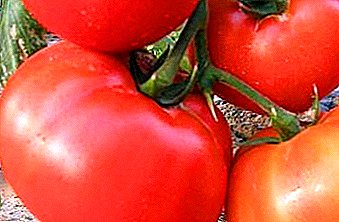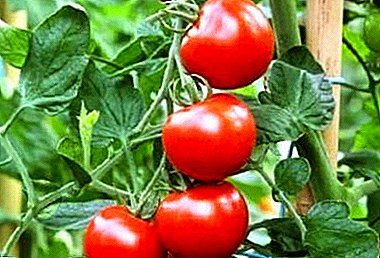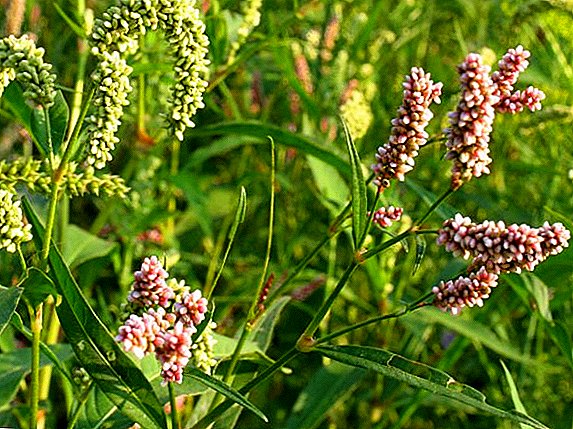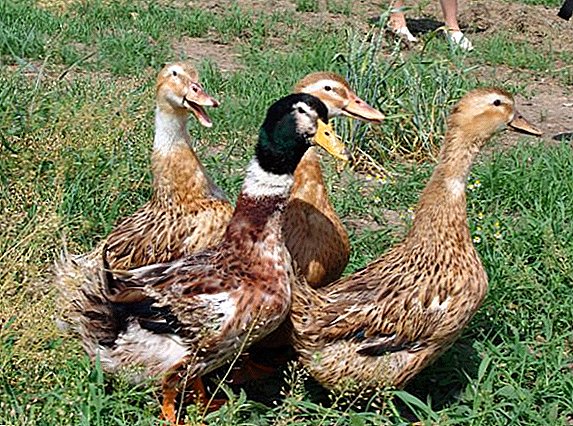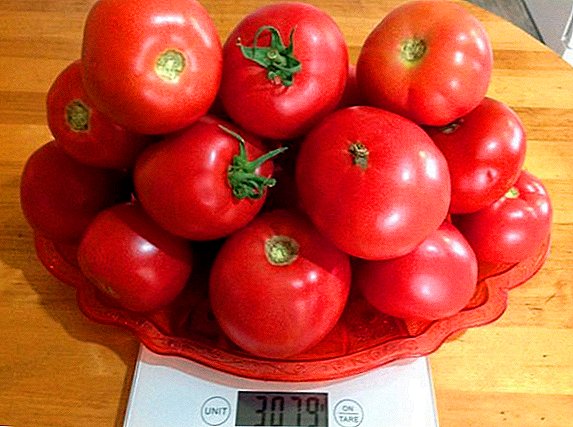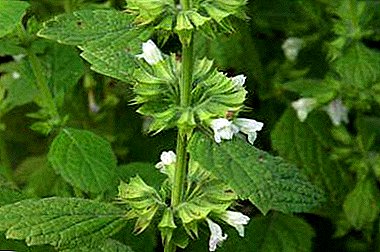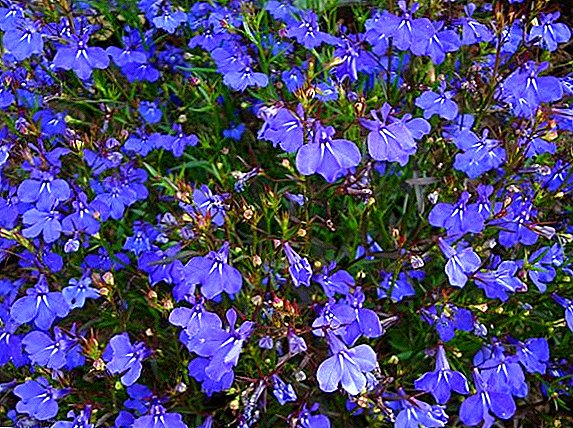 Amazingly beautiful flower lobelia does not require complex planting and care.
Amazingly beautiful flower lobelia does not require complex planting and care.
Therefore, gardeners recommend boldly decide on the cultivation of this plant on your site. How to do this, we will explain further.
Lobelia: plant description
 Lobelia is an annual, and with a certain care and perennial shrub or herb. They attribute it to the Lobelian family, although some prefer to call it bell-shaped. The flower grows into a compact spherical bush with a height of 10-20 cm. Some plant species can reach one and a half meters in length.
Lobelia is an annual, and with a certain care and perennial shrub or herb. They attribute it to the Lobelian family, although some prefer to call it bell-shaped. The flower grows into a compact spherical bush with a height of 10-20 cm. Some plant species can reach one and a half meters in length.
Bushiness is achieved due to the fact that thin stems still at the base begin to branch. Thin, they are densely covered with small leaves, while the flowers are kept on short pedicels. Inflorescences reach 2 cm in diameter and may have a blue, purple, navy, purple or white color.
Did you know? The plant was named after the Dutch botanist and director of the Royal Botanical Garden under Jacob I Matthias de L'Aubel. Although their homeland is considered to be South Africa, today it is growing everywhere, and even caught on in the regions of the middle belt. Today, more than 300 species of this plant are known, but we use about 20.
A variety of colors and forms of flowering gives scope in the formation of the design of the garden and landscape of the backyard, where lobelia is planted.
How to grow lobelia from seed
The question of how to plant lobelia can be solved in several ways, but the most convenient and common is sowing.
Important! When choosing a plant variety, focus on those species that have been growing in our latitudes for a long time. These include Lobelia Inftala, Emperor Willy, Crystal Palace, Riviera, Ezhevidnaya, Kaskadnaya, Kustovaya, Cardinalis, Blue, Aquarium, Ampelnaya and others.
How to prepare the ground for planting
 Planting lobelia on seedlings begins with the selection of a special soil mixture. You can buy a substrate in the store for growing flowers, or you can prepare it yourself in the fall. To do this, mix in equal proportions sand, peat, humus, forest land.
Planting lobelia on seedlings begins with the selection of a special soil mixture. You can buy a substrate in the store for growing flowers, or you can prepare it yourself in the fall. To do this, mix in equal proportions sand, peat, humus, forest land.
No matter what substrate you choose, it must be sifted through a mesh or a large sieve, as well as disinfected. To do this, it is watered with a solution of fungicide or heat treated at high temperatures, for example, in a microwave. Or vice versa, they are kept for a long time in the cold.
How to plant lobelia seeds
When choosing a time when planting lobelia in open ground, keep in mind that after sowing it blooms in 8-10 weeks. To do this, use a special cassette for seedlings, the cells of which have a depth of 5 cm.
At the bottom of each lay out pieces of bark, expanded clay or other drainage, and poured on the top of the mashed soil. It is well watered and give moisture to go down. And only then fall asleep with seeds mixed with sand.
Important! They start sowing lobelia from mid-February until the end of March, although experienced gardeners recommend doing it in the first half of March. The plant sown at this time will bloom a little later than February, but the difficulties with growing will be much less.
Sowing has its own characteristics. Seeds of a plant can be sold in bulk, and can be in granules, each of which contains from 5 to 8 seeds. Granules spread at a distance of about 3 - 4 cm from each other.
 If grains are caught in placers, they should also be sown with the nesting method. For this, the grains are poured onto paper, an ordinary pencil is taken, the tip is moistened with water and touched.
If grains are caught in placers, they should also be sown with the nesting method. For this, the grains are poured onto paper, an ordinary pencil is taken, the tip is moistened with water and touched.
Then the pencil is inserted into the ground and slightly scrolled so that the grains remain in the ground. Plants planted in this way sprout a bush, and then it is much more convenient to dive them.
Did you know? Those who want to grow a flower in hanging baskets may not care about the seedlings, but immediately pour the seeds into the ground, laid in pots, cover it with a film and put it on the window sill. It will bloom later than with the seedling method, but you can immediately bring the flowering plant to the garden.
It is important not to fill the grains with soil, otherwise they may not germinate. They are lightly sprinkled with sand to retain moisture, and slightly sprayed with water. The cassette is covered with a film to create a microclimate and put in a well-lit place, but with diffused light.
How to care for sprouts
When deciding how to grow lobelia seedlings at home, please note that lobelia is afraid of drying out soil. Therefore, if the room temperature is above 22 ° C, the film is not recommended to be removed for a long time. Clearly follow the watering schedule, not allowing the soil to dry.
Lobelia seedlings are very tender. When watering from above, they can bend down and die. Therefore, many people prefer to maintain the required level of humidity, adding moisture to the pan.
 By the way, if you water the plants in such a way that water does not fall on them, it will save them from the disease with a black leg. Since lobelia is planted with bushes, then between them you can make small depressions, filling them with water from a syringe.
By the way, if you water the plants in such a way that water does not fall on them, it will save them from the disease with a black leg. Since lobelia is planted with bushes, then between them you can make small depressions, filling them with water from a syringe.
The same method can be poured water on the walls of the container. It is necessary to resort to it for two or three weeks, which are necessary to ensure that the plant is strengthened. Then you can refuse these precautions.
As for the temperature regime, then, in principle, the seedlings survive at low temperatures, but if you want the shoots to appear faster, the air temperature should be 20-22ºC.
With the advent of the first shoots, it can be reduced to 15ºC simply by moving the container to the window sill. Remember that the shoots under the film must be periodically aired and condensate removed from it.
Pay attention to the lighting. With a short light day in February, additional lighting should be arranged so that the seedlings do not grow frail. In March, even if the seedlings are placed on the south side, such events will be superfluous.
 The first shoots appear fairly amicably in 7-10 days. In the first month they grow very slowly, but then growth accelerates. When the sprouts reach 1 cm, the film is gradually removed.
The first shoots appear fairly amicably in 7-10 days. In the first month they grow very slowly, but then growth accelerates. When the sprouts reach 1 cm, the film is gradually removed.
Two months after sowing, when sprouts have a height of 3-4 cm, 3-4 of them dive, and when the height of the sprout reaches 6-7 cm, it is pinched for greater bushiness.
Important! The biggest and most common mistake when growing seedlings of this plant is a sudden film removal when the first sunrises appear. From such stress, they can die during the day.
A dive is also carried out in groups, prying the bush with a spatula and replanting it into a cup. If lobelia is sown with carpet, it is simply divided into parts, which are placed in a bowl with a larger diameter.
 After this, seedlings need to be watered and kept in the shade for a couple of days. And only when it starts, you can pinch it. For this it is enough to cut the tops of the plant with scissors. Pinching can be done several times during growth.
After this, seedlings need to be watered and kept in the shade for a couple of days. And only when it starts, you can pinch it. For this it is enough to cut the tops of the plant with scissors. Pinching can be done several times during growth.
Planting lobelia in open ground
Planting seedlings of lobelia in open ground takes place approximately in the second half of May, when there is confidence that there will be no more night frosts. The site is selected for her sunny, although she feels great in those places that the sun warms with direct rays of no more than two hours a day.
What should be the soil for planting
If you want to achieve beautiful flowering of lobelia, plant it on not very fertile soils - loamy or sandy. At the same time, the ground must be breathable, loose, so that water does not stand in it. Avoid nitrogenous fertilizers. If you do not adhere to these rules, lobelia will go into growth in the green part, giving out a poor flowering.
How to plant a plant
Before planting lobelia in open ground, the seedlings must be hardened. To do this, on a warm, windless day, it is first brought to the street, avoiding the direct rays of the sun. It is advisable to put it in the shade, the next time - in partial shade, then you can make a couple of hours in the sun.
 Depending on what kind of aesthetics you want to achieve from lobelia, there is a special fit and care for it in the open field. So, for the formation of a continuous carpet, seedlings are planted at a distance of 10-15 cm, and for the formation of individual bushes - 25 cm from each other. Content in the pits is moved by way of transhipment.
Depending on what kind of aesthetics you want to achieve from lobelia, there is a special fit and care for it in the open field. So, for the formation of a continuous carpet, seedlings are planted at a distance of 10-15 cm, and for the formation of individual bushes - 25 cm from each other. Content in the pits is moved by way of transhipment.
Care of lobelia, we study the nuances
Lobelia, like any other plant, has its own character, given the characteristics of which, it is possible to achieve lush flowering.
In general, the main rules of care can be formulated in such basic theses:
- Maximum bright light with a minimum of direct sunlight.
- Watering plentiful, but make sure that the roots do not stagnate water.
- Feed fertilizer for flowering plants, avoiding nitrogen mixtures.
- Dense pruning in the middle of summer to provide a second wave of flowering.
Watering and feeding
Watering - the most important point in the care of the plant. Especially in hot weather, the soil should always be slightly moist. And lobelia ampelnaya requires watering twice a day.
 If you allow a long drought, the leaves and stems of the plants begin to turn yellow, burn in the sun. After such stress, the plant may die at all. At the same time, the stagnation of moisture also affects it destructively.
If you allow a long drought, the leaves and stems of the plants begin to turn yellow, burn in the sun. After such stress, the plant may die at all. At the same time, the stagnation of moisture also affects it destructively.
The loss of the decorativeness of a plant may also indicate that the soil is too saturated with nitrogenous mineral fertilizers or organic matter. But over the summer two or three times should be fertilized plants. To do this, use potassium sulfate, which provokes abundant flowering with a minimum of the green part of the plant.
Lobelia pruning
The plant is cut several times during the growing season. One of the most important is pruning after the first flowering, which falls around the middle of summer.
 Lobelia is cut, leaving only 5 cm of stalks above the ground. In two weeks it gives a wave of the second flowering, often more violent than the first.
Lobelia is cut, leaving only 5 cm of stalks above the ground. In two weeks it gives a wave of the second flowering, often more violent than the first.
In addition, pruning faded stems solves a purely aesthetic moment.
How to prepare lobelia for winter
In principle, lobelia is considered an annual plant, but some gardeners prefer to dig it up and put it in a house or greenhouse for winter, turning it into a perennial plant. It is important that it is kept in a cool, but bright room.
On the eve of spring, it is taken out, broken into cuttings, planted and rooting is waiting. When this happens, planted in open ground. This method is very useful in cases where sowing from seeds can lead to degeneration of the variety.
The most lazy gardeners do not cover the plant for the winter, leaving it to winter in the ground and not removing the seeds. The plant is easily propagated by self-sowing, but in this case it is worth waiting for flowering much later than when planting seedlings.
Plant propagation
 It is easier and more often to propagate a plant with seeds, which are stored on the plant in small boxes. The grains themselves are so small that they are hard to grab with your fingers. Therefore, they are usually collected, lined under the plant paper, on which the seeds and showered. It is easier to do this when lobelia grows in pots.
It is easier and more often to propagate a plant with seeds, which are stored on the plant in small boxes. The grains themselves are so small that they are hard to grab with your fingers. Therefore, they are usually collected, lined under the plant paper, on which the seeds and showered. It is easier to do this when lobelia grows in pots.
To collect seeds from a plant on the ground, cut off its shoots with not yet ripened bolls, knit bundles from them, and attach a paper bag from the bolls. All this is tied up to dry in a dry place. When the seeds ripen, they pour out into the package.
This can be done with already matured stems, shaking them well above the package. The contents are then sifted through a sieve, the seeds are collected in a matchbox and signed.
Their germination persists for three years. In the spring, they can simply be sown on moist soil and covered with a film. True, with such sowing shoots are unlikely to be thick.
There are perennial varieties that propagate by cutting. By the way, the plant itself requires periodic rejuvenation, transplants and renewal, which increases its vital signs. On average, such manipulations are carried out once every two years.
 Lobelia - small, but amazingly beautiful shrub. Caring for them is simple, and the flowering and shape of the bush makes it possible to use it in landscape design everywhere and successfully. And you can multiply it yourself as sowing, and by growing seedlings. The choice of method depends on when you want to see a flowering plant.
Lobelia - small, but amazingly beautiful shrub. Caring for them is simple, and the flowering and shape of the bush makes it possible to use it in landscape design everywhere and successfully. And you can multiply it yourself as sowing, and by growing seedlings. The choice of method depends on when you want to see a flowering plant.


